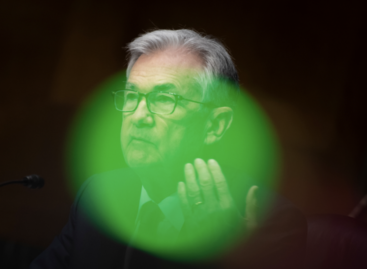Fidelity: International stock outlook: global recovery
It has been a banner year for US stocks, but internationally things have looked even better. International stocks, as measured by the MSCI All Country World Index (ex-US), were up nearly 25%, while the global economy has accelerated, and many emerging markets have benefited from higher commodity prices.
What’s ahead? Three Fidelity international fund managers share their insights.
A global recovery
William Kennedy, Fidelity® Worldwide Fund
We’re encouraged to see the macroeconomic backdrop improving worldwide. The United States has reported 2 quarters in a row of 3% (annualized) economic growth. In Europe, many countries are seeing growth stabilize or accelerate. Japan is experiencing better economic growth as well and, as a big exporter, stands to gain from the recoveries in the United States and Europe. Finally, many emerging markets seem likely to benefit from more political stability in local markets as well as higher commodity prices.
Finding non-US stocks that meet both my quality and price criteria has become more challenging as valuations have risen. Still, international stocks are generally cheaper than US stocks, and that discount is wide, relative to historical ranges. One area of focus for me is continental Europe, where the Fidelity® Worldwide Fund is overweighted as of October 31.
I think the next opportunity in Europe could be in old-economy industries, like homebuilders and building material manufacturers, which have much more rationally structured balance sheets and overall business models since the 2007–2008 financial crisis and the subsequent European sovereign-debt crisis. The weaker players are gone, which means less competition. As consumer and commercial demand ramps up, I believe the surviving old-economy businesses are in a much better position to raise prices, which should benefit earnings.
Among the industries that I’m most excited about are homebuilders in Spain, Ireland, and France, and construction and building-materials companies throughout Europe. In Ireland and Spain, for example, there is a smaller percentage of homebuilders than elsewhere in the eurozone, which has resulted in supply falling short of demand. In Europe, construction and capital expenditures as a percentage of gross domestic product remain at multi-decade lows, but the aging infrastructure will eventually need to be upgraded and replaced, which suggests that more homes, roads, and plants will likely be built going forward. I think the combination of better economic growth, more rational industry structures, and pent-up demand bodes well for the earnings growth of these old-economy companies.
Stocks related to these themes owned by the fund include a brick manufacturer based in Austria that is heavily exposed to new home construction in Europe and an Ireland-headquartered cement and paving firm that looks poised to see an uptick in business as governments start investing in long-neglected infrastructure projects.
Emerging markets: valuations and a positive economic backdrop
Sammy Simnegar, Fidelity® Emerging Markets Fund
My 2018 outlook for emerging markets (EM) is fairly optimistic, partly due to the macroeconomic backdrop, and also because I think overall stock valuations are attractive relative to developed markets.
On the macro side, I’m encouraged by signs of synchronized acceleration in global economic growth. In particular, I think China has managed its transition to a consumer-driven economy rather impressively so far. This process has much further to go, and I see potential for continued economic expansion there.
Consumer confidence in the leading EM countries, namely China, India, and Brazil, also is an important driver for EM markets, and all have seen better-than-expected consumer confidence levels in recent months, which I think bodes well as we approach the new year.
The direction of commodity-sensitive countries will continue to play an important role in emerging markets—especially Russia, Brazil, and other nations that depend on oil revenue. There, too, we’re seeing some positive signs, as continued-strong global oil demand and reductions in supply may continue to support energy prices as we enter 2018.
Of course, emerging markets are also influenced by the economics of major developed markets. In the US, I think the economy looks healthier overall than in recent years, even though it seems to have slowed a bit in the fourth quarter. Meanwhile, Europe and Japan are positioned to continue benefiting from a combination of decent economic growth, low inflation, and accommodative monetary policy.
Cyclicals over defensive sectors
As we approach 2018, I have been increasing the fund’s stake in more cyclical sectors such as information technology and industrials, and lessening the allocation to more defensive sectors such as consumer staples and health care. When evaluating cyclical stocks, I generally focus on firms I think have dominant market share, sustainable margins, high barriers to entry, “best-in-class” returns on invested capital, recurring revenue streams, and properly incentivized management teams.
A new fund position in 2017 that checked most of these boxes was Hangzhou Hikvision Digital Technology, the world’s largest manufacturer of security cameras. The company increased its market share in the latter half of 2017, both in its home market of China and also abroad, while making inroads in applications that provide machine vision—also known as industrial image processing—and artificial intelligence in China. It’s a company I think can help address the threats of global terrorism and crime, which is a theme I am watching closely for possible investment implications in 2018.
I strive to add value for my fund’s shareholders by focusing on 2 factors: quality and momentum. I think a focus on quality can give my shareholders a somewhat smoother ride during the market’s rough patches. Meanwhile, looking at momentum helps keep me focused on the stocks that are participating in the rally, and avoid those—despite being attractive in other ways—that are responding less favorably for some reason.
Related news
Gergely Suppan: the recession is clearly over in Hungary
The recession is clearly over in Hungary, from now on…
Read more >The domestic economy grew by 1.1% in the first quarter
In the first quarter of this year, the performance of…
Read more >2024 Q2 Investment Outlook: Timing matters
Positive momentum is building. The outlook for 2024 has brightened,…
Read more >Related news
Euro zone inflation was 2.4 percent in April as well after March
In line with analysts’ expectations, annual inflation in the euro…
Read more >Gergely Suppan: the recession is clearly over in Hungary
The recession is clearly over in Hungary, from now on…
Read more >K&H: the inflation anomaly is clearly visible, but customers perceive it differently
Although inflation has slowed down a lot, according to the…
Read more >






